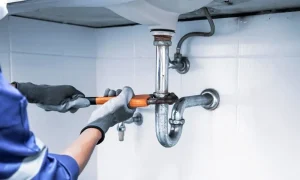How a reverse mortgage works

Everyone is familiar with the traditional mortgage. It is a time-payment contract to buy property. The lender fronts the total cost of a home, for example, and the buyer pays down the value of the property plus interest at a specified rate, over the life of the loan.
A reverse mortgage, on the other hand, is the opposite. With a reverse mortgage, the owner already owns the house (or at least a good amount of equity). The loan amount for a reverse mortgage is not paid down. Whatever interest the lender is charging compounds upward. Think of a reverse mortgage as a way to access the dormant equity of a home.
Advantages of a Reverse Mortgage Purchase
Reverse mortgages are FHA guaranteed. At the end of the mortgage—either when the home is sold, or the owner dies—the amount owed on the reverse mortgage can never exceed the value of the home. If the owner dies, the estate cannot be billed for the difference if the sale of the home results in a lower amount than the remaining reverse mortgage amount.
Eligibility for a Reverse Mortgage Purchase
Eligible property for a reverse mortgage purchase includes single family homes or 2-4 unit homes with one of the units occupied by the buyer. Also, any HUD approved condominium projects or manufactured homes that meet FHA requirements are eligible.
The borrower must meet financial qualifications published by HUD.gov. Essentially, the borrower must:
- be at least 62 years of age
- own outright or have paid down a substantial amount of the property’s original mortgage
- live at the property as the owner’s primary residence
- be free of any delinquent federal debt
- have the financial means to support the property—taxes, insurance, association fees, etc.
- attend a HUD-sponsored consumer information session
Note: HUD also thoroughly verifies the borrower’s financial history, income, assets, and monthly expenses.
How Much You Can Borrow on a Reverse Mortgage Purchase
The total amount that can be borrowed is determined by the age of the youngest borrower, the value of the home, or the lending limit set by HUD—whichever is lowest. (The 2020 lending limit set by HUD is $765,600.) The borrower should also consider loan costs (closing, servicing, etc.), which are subtracted from the principal limit.
Important: If there is a remaining unpaid amount on the home’s mortgage, the borrower must first pay off the original mortgage with the proceeds of the reverse mortgage.
How You Can Receive Reverse Mortgage Payments
When deciding to withdraw from the equity of your home through a reverse mortgage, you can choose from any one of the following options:
- a lump sum at a fixed-rate option. You must take the full amount of all the money available at the close of the loan
- an accessible line of credit at the borrower’s option
- term payments for a specified amount and time period
- a guaranteed so-called “tenure payment” lasting so long as the borrower lives in the home
The borrower can also opt for appropriately modified versions of options of the above and blend the payment scheme accordingly.
Looking for more information of reverse mortgages and other options to leverage the equity of your home? Contact us.
Source
https://www.hud.gov/program_offices/housing/sfh/hecm/hecmabou








